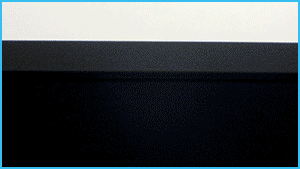Healthcare Resources
Choosing the Ideal Monitor for Teleradiology
Teleradiology allows hospitals to adapt to the increasing trend towards remote working for in-house radiologists so they can conveniently read from home. For the remote radiologist, however, it can be a challenge to comply with the strict regulations imposed on medical equipment under a limited budget, as well as to implement a proper diagnostic work environment that allows for their optimal concentration.

This article covers some major points to consider when choosing a monitor for remote diagnostics so you can rest assured that each interpretation is just as accurate as one made in a dedicated reading room.
01
Medical-Grade Monitor
FDA 510(k) Clearance
When preparing an environment that is teleradiology-ready, it is important to consider the accuracy of the monitor you use to view medical images. The U.S. Federal Drug Administration issues FDA 510(k) clearance for medical monitors that meet its stringent requirements for diagnostic use. Monitors that fulfill this standard are considered medical-grade and thus, can be used reliably for medical image interpretation in general radiography or other areas for which it gains approval. Using a medical-grade monitor over consumer-grade for teleradiology is integral to ensuring that what you see on the screen is optimized for medical use, so whether you are on site or working remotely, you can make diagnoses with confidence.

02
Maintaining DICOM Part 14
Built-In Calibration Sensor
Using a monitor that does not properly support the DICOM Part 14 standard is incapable of displaying certain gradations accurately. This may cause pertinent information for a diagnosis and potentially negatively impact patient care. To ensure that a monitor can display grayscale tones correctly according to this standard, it is necessary to readjust it through regular calibration. Select RadiForce medical monitors come equipped with a built-in calibration sensor that measures brightness and grayscale tones, then calibrates to the DICOM Part 14 standard for consistently faithful reproduction. The sensor is hands-free so does not interfere with the viewing area when in use, providing peace of mind to the teleradiologist.
|
|
 |
| IFS swings onto the screen |
03
Streamlined Connection
USB Type-C Docking
Mobile workstations are often used for home reading. To get started on your work right away, EIZO's recommended monitor for teleradiology, MX317W, features a USB Type-C port for streamlined connectivity. USB Type-C allows you display video, transmit USB signals, supply power to connected mobile workstations, and even transmit a network signal.

04
Working Comfortably
Optimal Positioning
|
If your monitor is not positioned properly, it can cause stiff shoulders and backpain over prolonged use. A highly versatile stand that allows a range of height adjustment, tilt, and swivel options enables you to position the screen in the most ideal way for comfortable viewing. This helps to promote increased work efficiency and alertness. |
|

05
See Every Detail
8 Megapixel Resolution
It is not always possible to install a multi-monitor environment for teleradiology in a home office. A single monitor that is too small or low in resolution limits the radiologist’s ability to see important applications and impacts work efficiency. A monitor with 8 megapixels of information (4096 x 2160) across a large screen provides more space to view detailed, high-resolution medical images with clarity, as well as increased viewing space to freely lay out multiple windows and applications. This makes it possible to display various images, such as CT and MRI, side-by-side for more efficient comparison.

8MP (4K)
06
Comfortable Image Reading
Work-and-Flow Technology
|
As more image modalities become digitalized, radiologists are viewing an increasing volume of information on their screens. RadiForce medical monitor solutions bundled with Work-and-Flow technology alleviates the complexity of the imaging workflow with functions developed with the radiologist in mind. |

And more! |
07
Peace of Mind
Quality Control Server Hosting
It can be difficult for hospitals to maintain quality control of monitors situated at remote locations, not to mention the additional burden on the remote radiologist if they are required to carry this out themselves. EIZO can set up and host a quality control web server, allowing hospitals to centrally maintain quality control for monitors on the network, so administrators can conduct necessary QC operations and relieve the burden on teleradiologists.

Recommended for Teleradiology


31.1" (79 cm) Color LCD Monitor
Further Comfort


Comfort Light for Reading Rooms





